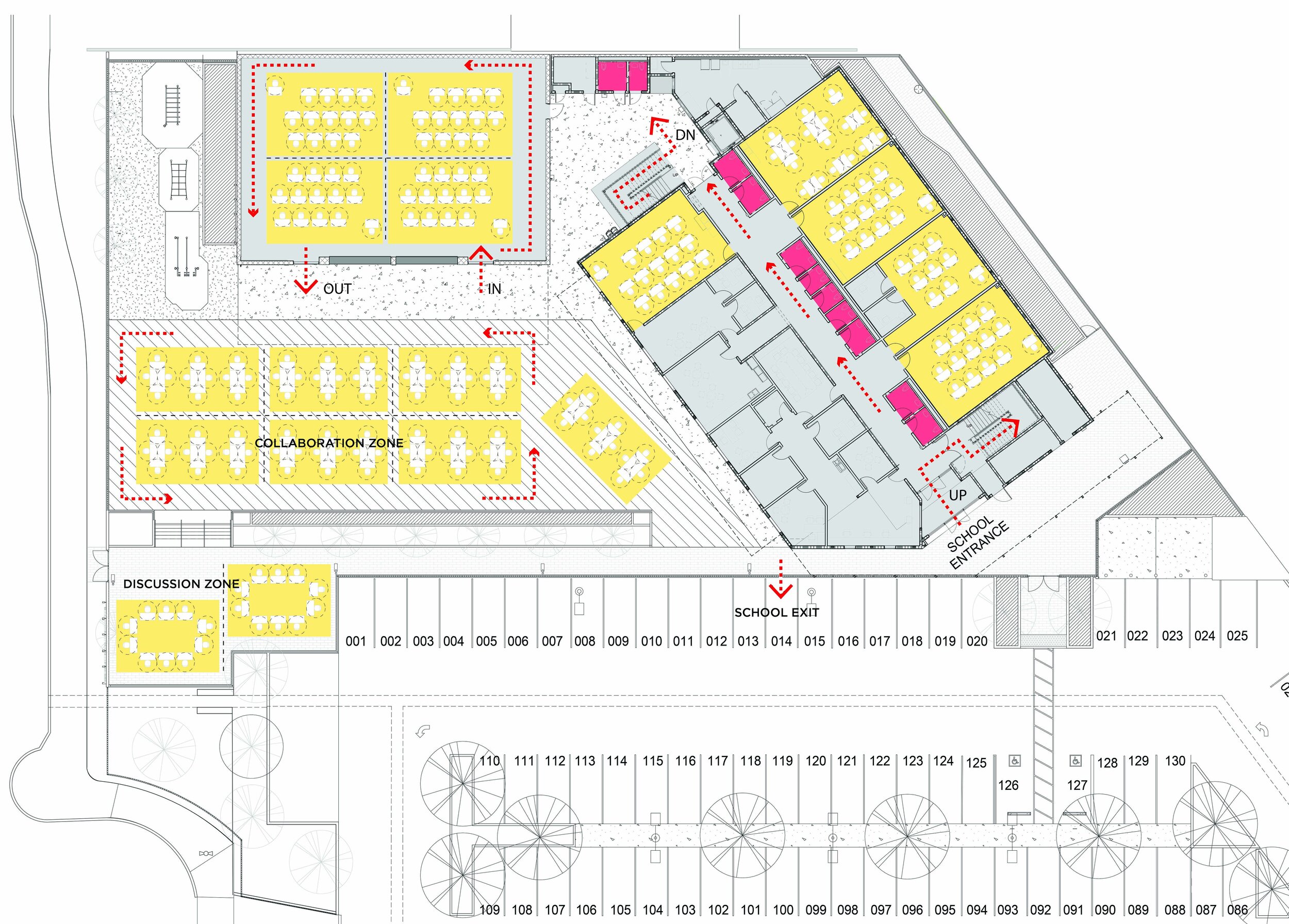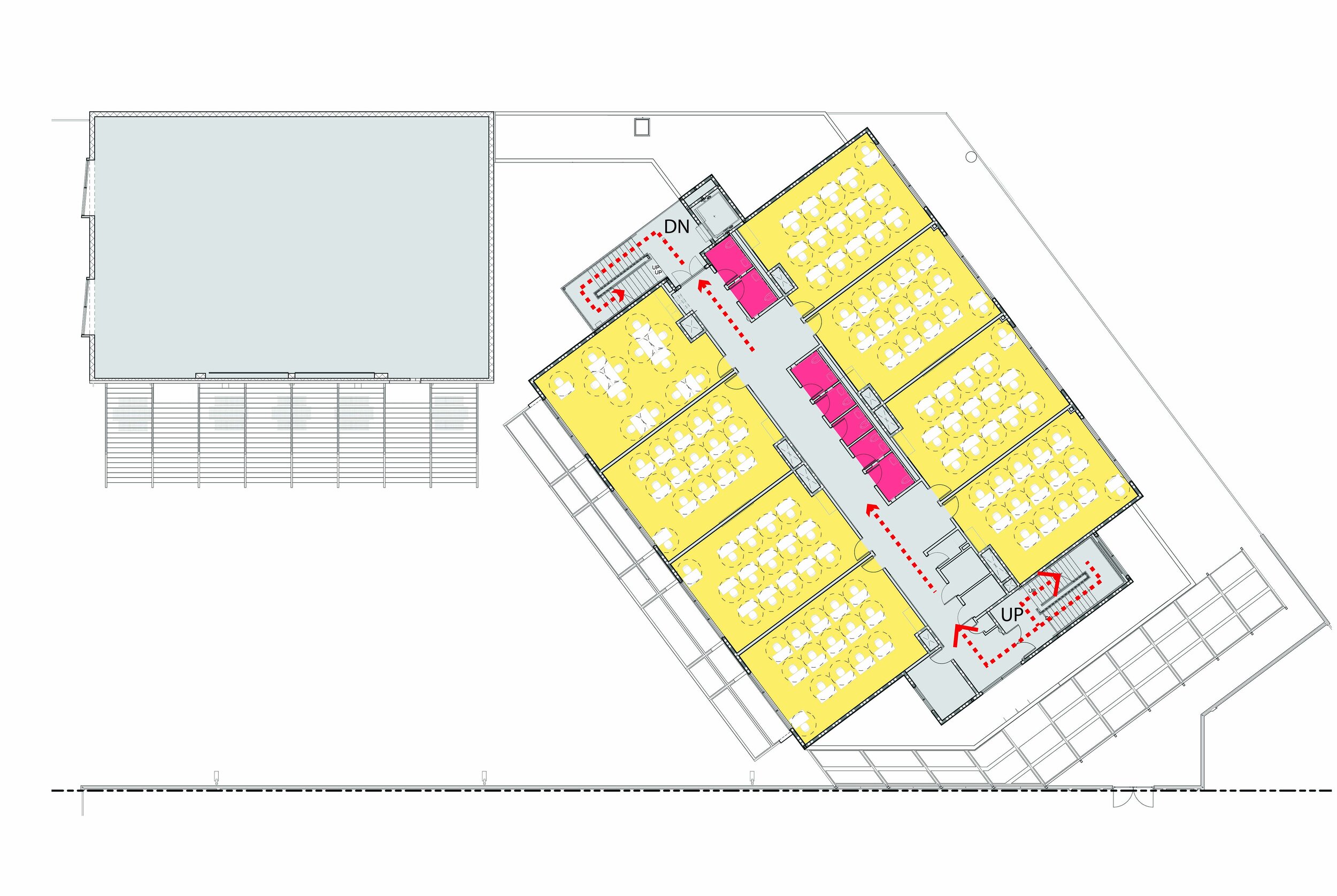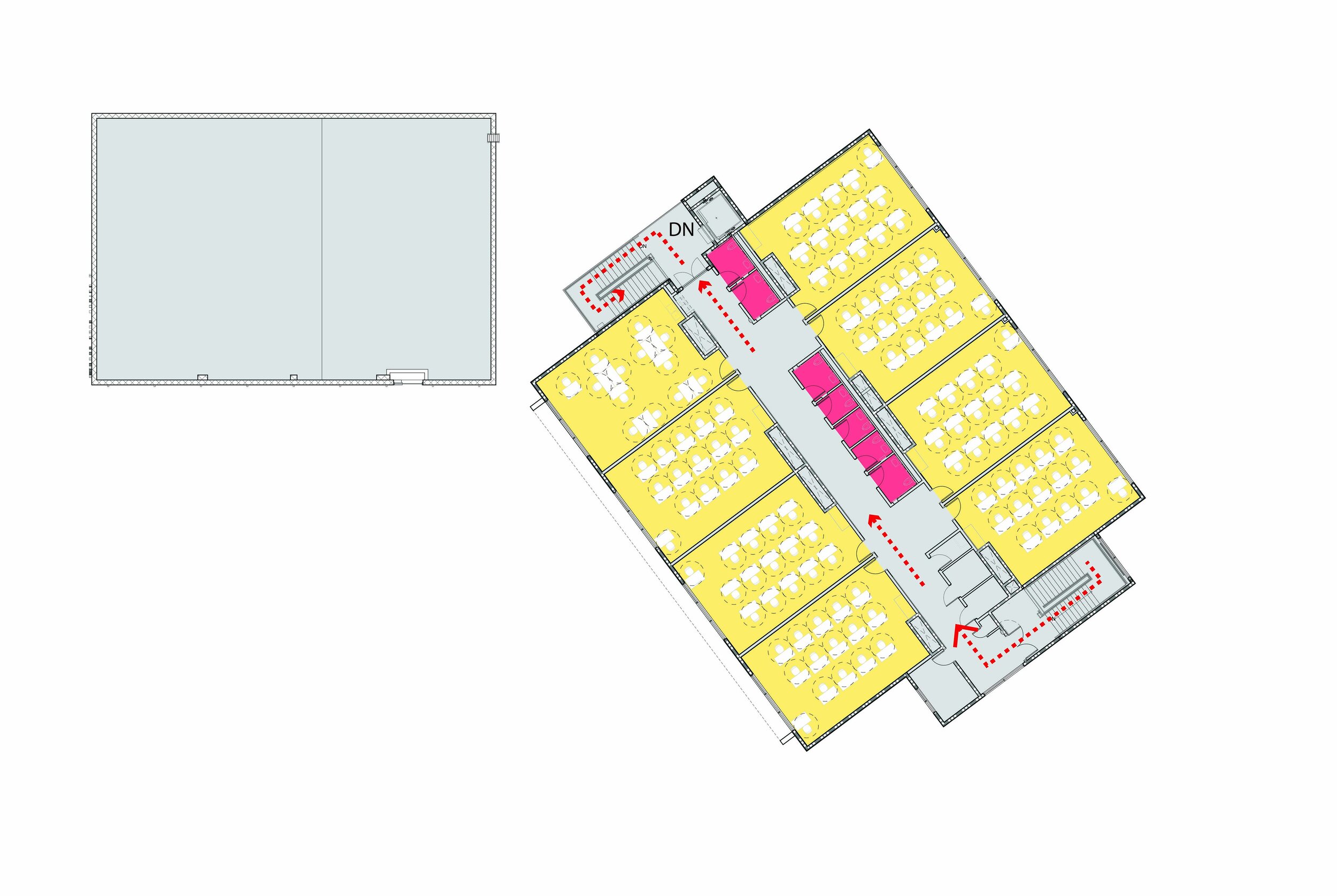In our first blog post we studied how classroom furniture layouts might be arranged to achieve 6’ distancing between student desks. But how do you teach the same number of students using existing classrooms and a reduced student count per classroom? We wanted to investigate how assembly and outdoor spaces could serve as temporary classrooms to increase capacity. Studying Bright Star Schools new Stella Middle School, we evaluated opportunities to create additional learning spaces both inside and outside.
The school has 21 classrooms distributed on three floors. Reducing the occupancy of each classroom for social distancing from 24 to 12 students reduces the overall student capacity from 504 to 252 seats. As areas like the multi-purpose room and outdoor areas will be less used to limit large gatherings, we began to study what it could mean if these spaces could become temporary classrooms, how many can fit and how could we make this work?
With this new scheme that utilizes the biggest common areas throughout the campus, Bright Star would be able to accommodate 408 students. Because collaborating or project-based learning is most effective when you are within 6’ and able to work on the same project, outdoor classrooms with their abundance of fresh air could be dedicated to this style of learning, while discussion and lecture style classes can utilize indoor classrooms. This new scheme brings new concerns that schools may need to have more teachers as there are more classrooms. Let us know if you have any idea how schools might be able to support these additional spaces.
We also wanted to look into the circulation of the school. With additional classrooms and social distancing, we wanted to study paths of travel and how one way direction and associated wayfinding could play a role in helping to coordinate large school movements like the beginning and end to the school day. Could circulation be directional in order to minimize social contact? Could one stair be up only and one down only? Could large arrows on the floor help coordinate the flow of students and staff?
As we talk to many of you, it’s interesting to see how scheduling could play a role as an alternative to how many students could be taught at the same time without fully occupying the building. It’s fascinating to hear how well online learning is going and how classes might flex by utilizing a blended learning model. Every school is different, but perhaps connections can be made with neighboring owners to allow for temporary use of empty parking lots, or even taking students out on field trips to parks, community gardens, or neighborhood walks. Please let us know how you plan to go back to school!





